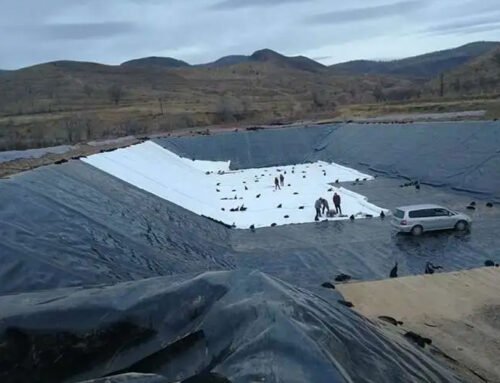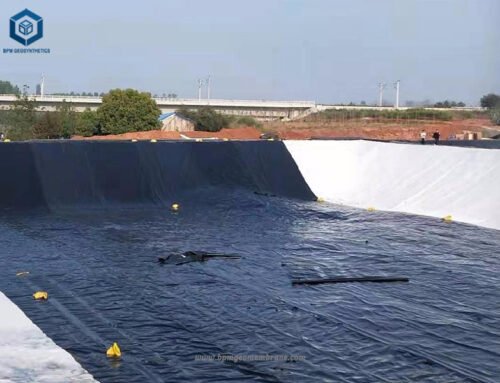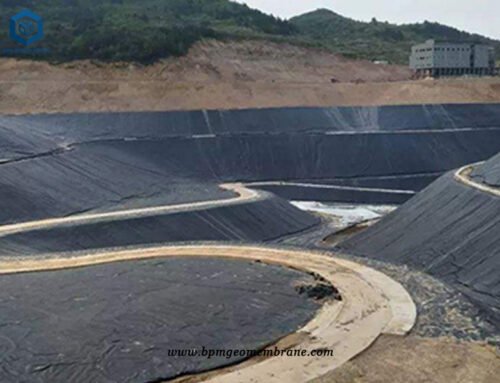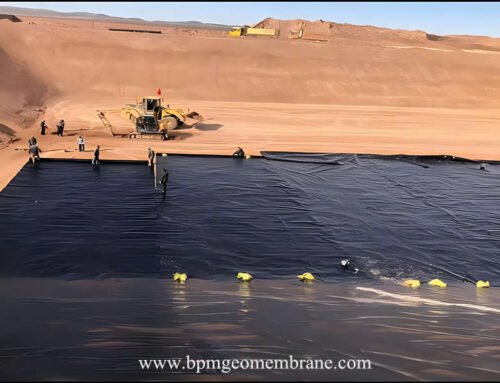Landfill liner material is a type of geomembrane liner which is made of polyethylene and intended to be a low permeable barrier, which is laid down under engineered landfill sites.
BPM landfill geomembrane liner, manufactured in accordance with the high-quality ASTM GM13 Standard, provides effective protection for water and soil in landfills. Designed specifically for solid waste treatment, these flexible and lightweight landfill liner material can withstand temperature variations and offer high resistance to various contaminants.
1. What Is Landfill Liner Material?
1.1 The Importance of Landfill Liner Materials
Landfill liner materials are essential in modern landfill design to prevent soil and groundwater contamination from leachate, the liquid formed during waste decomposition. Choosing the right liner depends on factors like cost, durability, impermeability, and environmental impact. Common materials include high-density polyethylene (HDPE) and low-density polyethylene (LLDPE) geomembranes, which are widely used in landfill caps, covers, and liners due to their reliability and effectiveness.
1.2 BPM’s High-Performance Landfill Liner Solutions
BPM’s landfill liner material is made from high-quality virgin polyethylene resin, ensuring a smooth, even surface with superior chemical and mechanical properties. These liners provide excellent puncture resistance, UV resistance, anti-aging performance, and seepage control while remaining cost-effective and easy to install. The HDPE geomembranes act as a strong barrier, preventing waste contaminants from spreading and managing water flow within the landfill.
1.3 Applications and Environmental Benefits
BPM’s landfill liner materials are widely used in erosion control, foundation drainage, methane gas collection, and pond leak detection. They ensure reliable waste containment, protecting surrounding ecosystems from pollution. By using BPM’s liners, landfills can minimize environmental harm, safeguard soil and water resources, and maintain sustainable operations. These materials play a key role in modern waste management, supporting long-term environmental safety.
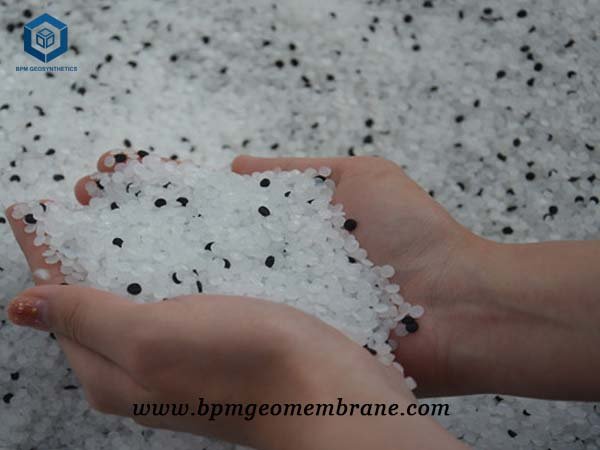
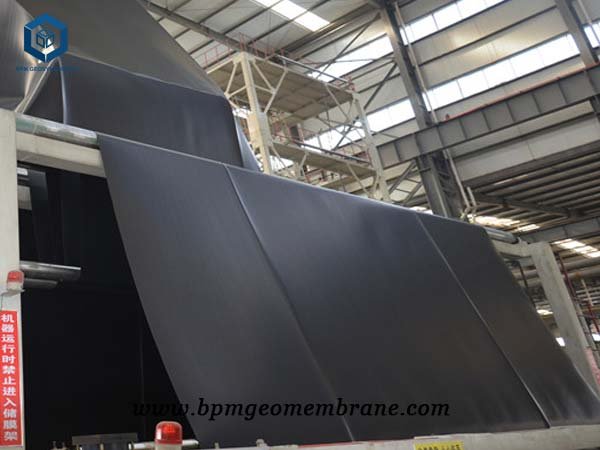

2. What Are The Advantages Of Landfill Liner Material Canada for Waste Containment?
Landfill liner materials are crucial for waste containment, preventing leachate from seeping into soil and groundwater. In Canada, these materials offer several advantages:
2.1 Environmental Protection
Landfill liners safeguard local ecosystems and water sources by preventing the contamination of soil and groundwater with pollutants that can leach from waste.
2.2 Public Health
Landfill liners reduce the risk of exposure to hazardous materials which contain harmful substances, , thereby protecting public health.
2.3 Long-Term Durability
High-quality landfill liner materials are designed to endure the harsh conditions within landfills, including chemical exposure, mechanical stress, and degradation over time. This durability ensures effective waste containment in the long run.
2.4 Odor and Pest Minimization
Landfill liners contain waste and reduce the generation of odors and attractants for pests, enhancing the aesthetics and safety of the surrounding area.
2.5 Land Degradation Reduction
Without proper containment, landfills can contribute to soil degradation and the contamination of natural resources. Landfill liner materials mitigate these negative impacts by containing waste and preventing its dispersal into the environment.
2.6 Flexibility and Adaptability
Landfill liner materials come in various forms, such as geomembranes, geosynthetic clay liners (GCLs), and composite liners. This flexibility allows landfill operators to choose materials that best suit site-specific conditions and waste characteristics.
3. Case Study of Landfill Liner Material Canada for Waste Containment
3.1 Building Trust Through Engagement: A Canadian Landfill Liner Success Story
Our journey with a Canadian customer began with their inquiry about landfill liner materials. Recognizing the importance of their project, we immediately provided detailed product information and high-quality geomembrane samples. This initial step allowed them to evaluate our landfill liner material firsthand, ensuring it met their technical and environmental requirements.
To further address their concerns about anti-seepage performance and durability, we invited them to visit our manufacturing facility. During the tour, they observed our advanced production processes and rigorous quality control measures, reinforcing their confidence in our HDPE geomembrane for landfill applications.
3.2 From Confidence to Contract: Securing the Partnership
The factory visit proved pivotal—the customer was able to verify the superior quality of our landfill liner material and its suitability for their waste containment needs. Satisfied with our transparency and product reliability, they proceeded to sign an order contract, officially choosing BPM as their supplier.
This successful collaboration highlights the importance of clear communication, product demonstrations, and trust-building through direct engagement. By addressing their specific concerns and showcasing our manufacturing excellence, we solidified a partnership that ensures long-term environmental protection.
3.3 Environmental Impact & Future Applications
With our landfill liner materials now deployed in Canada, the project contributes to safer waste containment, preventing soil and groundwater contamination. This case demonstrates how high-performance geomembranes play a crucial role in modern waste management, protecting ecosystems and public health.
Our partnership with this Canadian customer reflects BPM’s commitment to delivering reliable, sustainable solutions for landfill projects worldwide. As environmental regulations grow stricter, our geomembranes continue to provide effective, long-lasting protection—ensuring a cleaner, safer future.
4. Specifications of Landfill Liner Material for Waste Containment
- Total landfill liner quantity – 31600 m2
- Geomembrane thickness – 2.0mm
- Each roll size – 7m*140m
- Total 40 HQ containers
BPM Geomembrane had provided many types of effective and state of the art geotextile, geomembrane and geosythetics products to over 81 countries. BPM brand geoemmbrane had been certificated by the ISO9001, ISO14001,OHSAS18001 Soncap, SASO and BV certificates and passed the test of SGS and Intertek, etc.
If you have any questions or inquiries, please contact us, we will reply as soon as possible.

